Revitalizing Urban Trees in London for a Second Life

By Mark Gould
It's the dream of many a maker to create furniture with timber sourced a matter of yards from the workshop. While that might be achievable for people living in rural settings, when your workshop is in the heart of the East End of London, not exactly timber country, that sounds pretty nigh impossible.
Thanks to the eminently portable Wood-Mizer LT20 sawmill the Eric Street Plane tree, felled some five hundred paces from my workshop and lying somewhat unloved for the last eighteen months, is now resting in a neat stack of many dozens of valuable planks. You could say it is almost the ultimate zero carbon footprint timber.
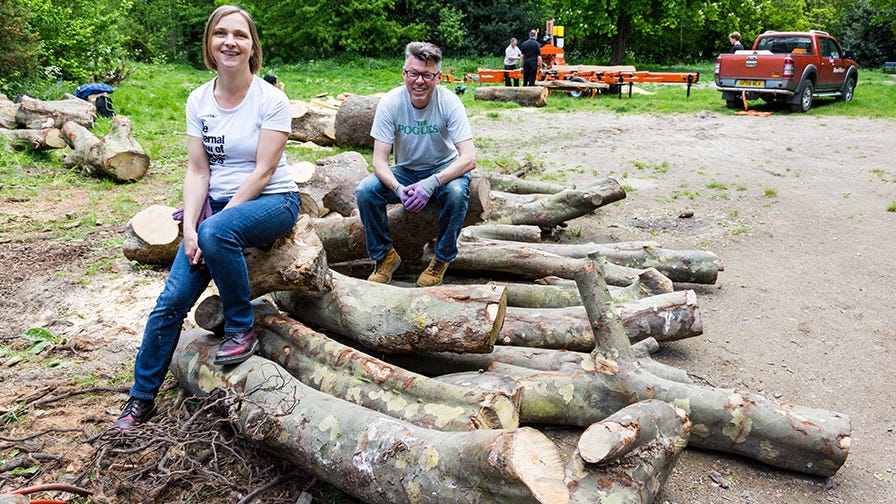

After a long day at the helm of the LT20 sawmill by Wood-Mizer United Kingdom general manager Dave Biggs and assistant Derek Schumann, the Eric Street Plane yielded some really impressive boards including some beautiful quarter sawn timbers with their distinctive freckle-grain, known as lacewood, which will make some lovely high quality stuff.
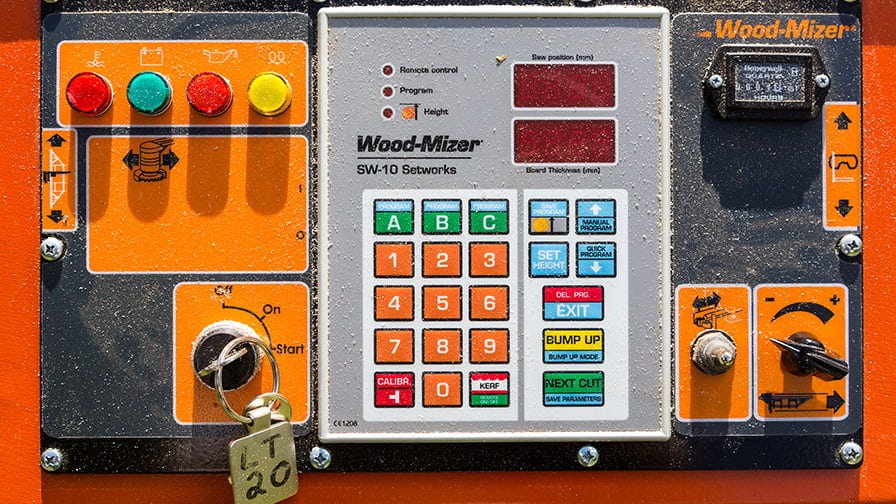

But the generous Plane (Platanus x acerifolia), planted around 1880 to 1890 to decorate the Victorian terraces of Mile End, will also be used by local schools to make activity tables and by green woodworking groups and a local charity which helps ex-cons and former drug and alcohol addicts back onto the straight and narrow.
The Eric Street Plane fell victim of the building boom which many people will be aware has gripped the East End of London over the last decade. Nearby building work had rendered the tree unsafe. Luckily Paul Pulford, who runs Grounded Ecotherapy, a horticultural therapy group, persuaded the tree surgeons to deliver the tree a couple of hundred yards into Tower Hamlets Cemetery Park where he is based.
Until the late 70s, Tower Hamlets Cemetery was one of the Magnificent Seven London cemeteries along with more famous sisters such as Highgate, West Brompton and Kensal Green. After it closed to burials, the Cemetery fell into misuse, choked with brambles, nettles, abandoned shopping trollies, burnt out motorbikes and drug takers. However, thanks to the hard work and devotion of a group of local people the Cemetery has undergone a gradual rebirth as a fabulous community resource, part park, part nature reserve, part repository of social history.
It is now managed by two charities, The Friends of Tower Hamlets Cemetery Park and the Soanes Centre, which run community and school education projects including green woodworking courses. Last year it hosted the Shuffle Film Festival to raise money for local projects which was organized in part by Danny Boyle, the Trainspotting and 2012 Olympics Opening Ceremony director who lives nearby.
Where do I come in? Just next door to the Cemetery, the Fenchurch Street to Southend railway line thunders over ancient brick railway arches housing all manner of creative folk and me. I make furniture in a workshop with a couple of pals including Mandie Beuzeval and Tim Grist who also recently graduated from The Cass School of Art and Design.
Although the tree was sitting in Horse Chestnut Glade making a lovely home for all manner of bugs and beetles and capturing 130-odd years of smoggy old London carbon, it was a valuable resource going to waste. With a resurgence of interest in buying local, and given its East End provenance, I could see a useful commercial hook in using the timber to attract environmentally conscious furniture buyers. And to add to some impressive local cachet, London being that vast reservoir of historical coincidence, the tree would have been planted around the time that eminent Arts and Crafts furniture maker and all round renaissance man C.R. Ashbee was setting up his Essex House work shop two hundred yards away on Mile End Road.
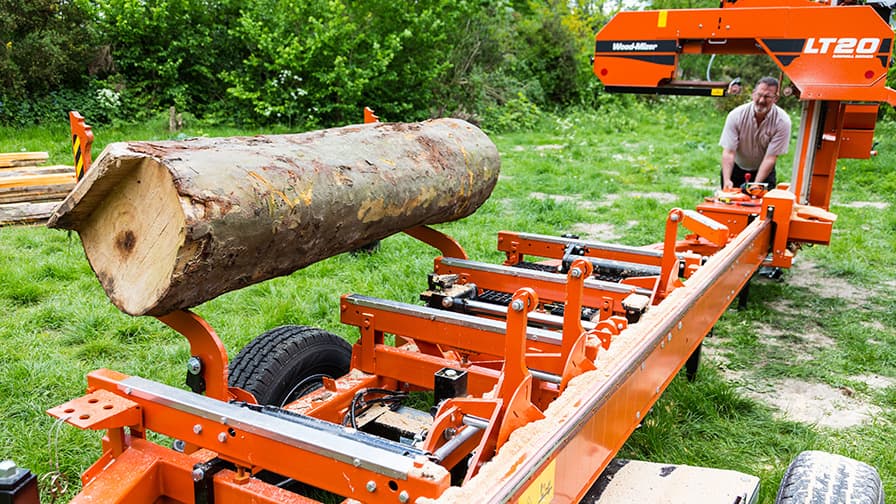

Dave, Derek and the LT20 arrived on an early May day when the sun shone and the park was packed with all manner of volunteers and visitors eager to just have a good old stare at this wondrous machine, and to help out in moving the converted planks to the spot where they are now slowly seasoning. The Cemetery benefits from links with City businesses and companies in the nearby Canary Wharf financial quarter. From time to time, the desk bound folk get a chance to really dress down and act as volunteers fighting the never-ending battle against brambles, nettles and at present, Cow Parsley.
The muscle for hauling all that tonnage of timber was provided by a gang of young and enthusiastic actuarial and insurance wizards from no less than the Bank of England. The tree surgeons had dumped Eric in a heap at the edge of the Glade and, as the nearby shrubbery and bushes were being used to encourage nesting wrens, robins and other species, the park manager Ken Greenway asked that the Wood-Mizer be set up as far from them as possible.
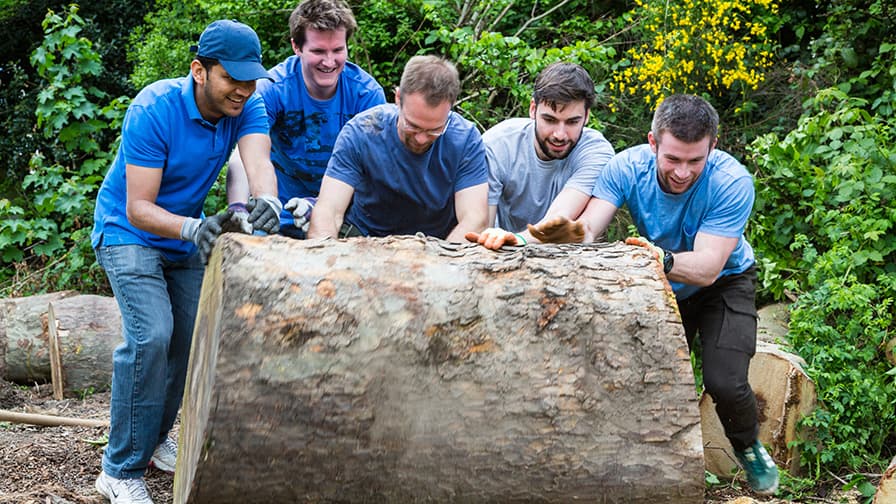

Once Dave had demonstrated the mechanical advantage gained by using a cant hook, a simple wooden pole with a hinged steel hook, the lads were having a great time rolling the trunks onto the hydraulic arms of LT20. The machine can take trees of up to 800 mm diameter but very stubby trunks can be a problem as they would not be long enough for the hydraulic arms to lift them onto the bed of the machine. Note to tree surgeons: give us enough length to make life easy!
The other thing to bear in mind given the 800mm limit is that the piece to be machined needs to be as smooth and free of protruding branch stubs as possible or it will foul the mouth of the Wood-Mizer. So prepare your timbers well in advance to speed up the process.
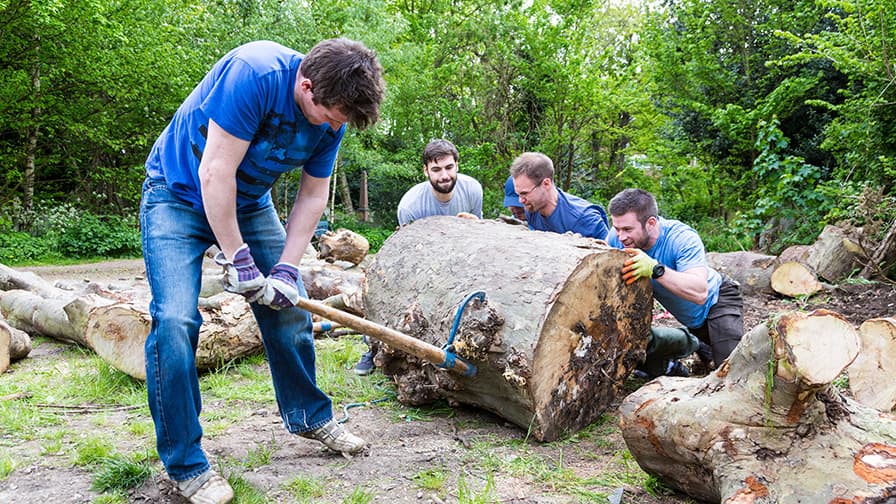

With the workpiece on the bed of the Wood-Mizer its system of hydraulic pistons, toothed grips and stoppers to orientate the timber so that it can be quarter sawn (i.e. sawn with the blade tangential to the growth rings to reveal the valuable lacewood figuring). The Wood-Mizer gave a beautiful cut, with a tiny 2mm kerf reducing wastage. The finish of freshly sawn planks was excellent with minimal ripples and blade marks which will make planing up and processing much less time consuming.
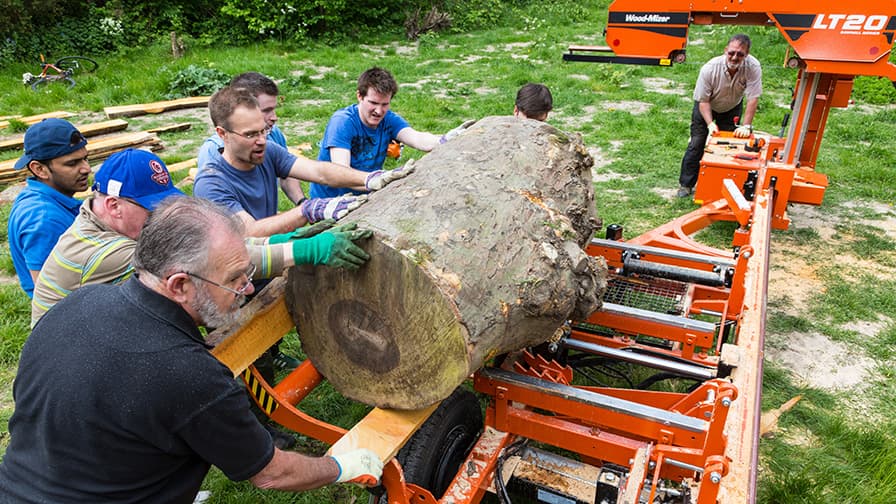

As with all trees that have lived in London, especially ones which survived the Blitz on the nearby London docks, the Eric Street Plane did have a small amount of metal contamination. Our tree missed any shrapnel but had its share of barbed wire and nails which were well embedded. Hitting one of these does damage blades and leads to a coarser cut but we managed to get by with only three blade changes.
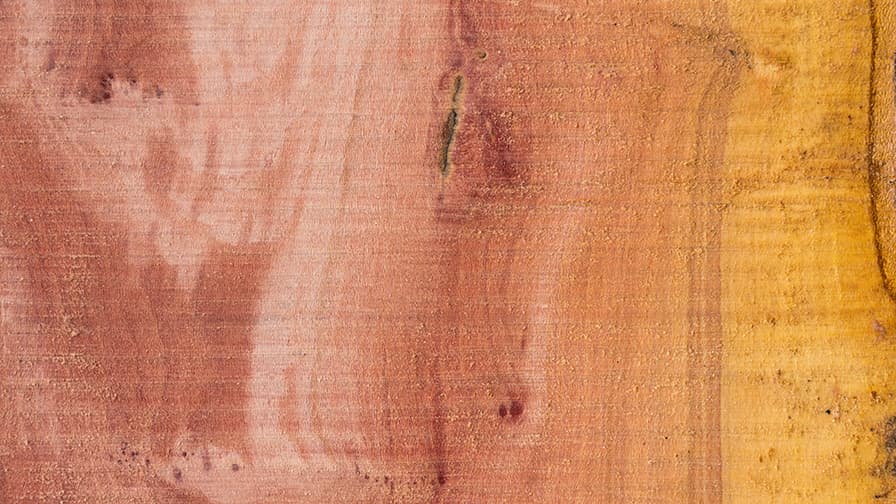

The Wood-Mizer performed without a hitch all day and produced over 60 boards in 32mm, 38mm and 150mm thicknesses in a range of widths and lengths all of which are neatly stickered and stacked. As we don't have a kiln they are sitting in a home-made air drying shelter in a quiet corner of the Cemetery. The air-drying rule says a year of drying for every inch (25mm) of timber.
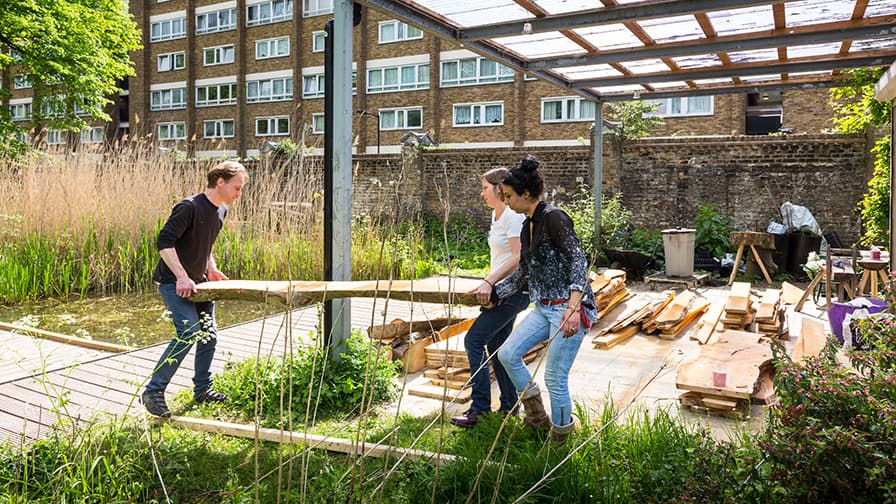

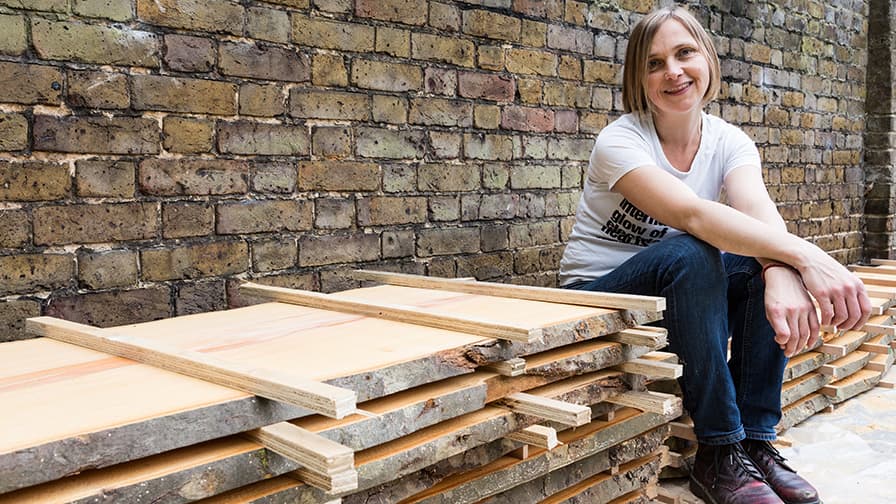

Looking at the boards I can already see coffee tables, chairs, dining tables, shelving and all manner of lovely stuff with that beautiful, and local, lacey filigree. Can’t wait to see what we will create!
***

